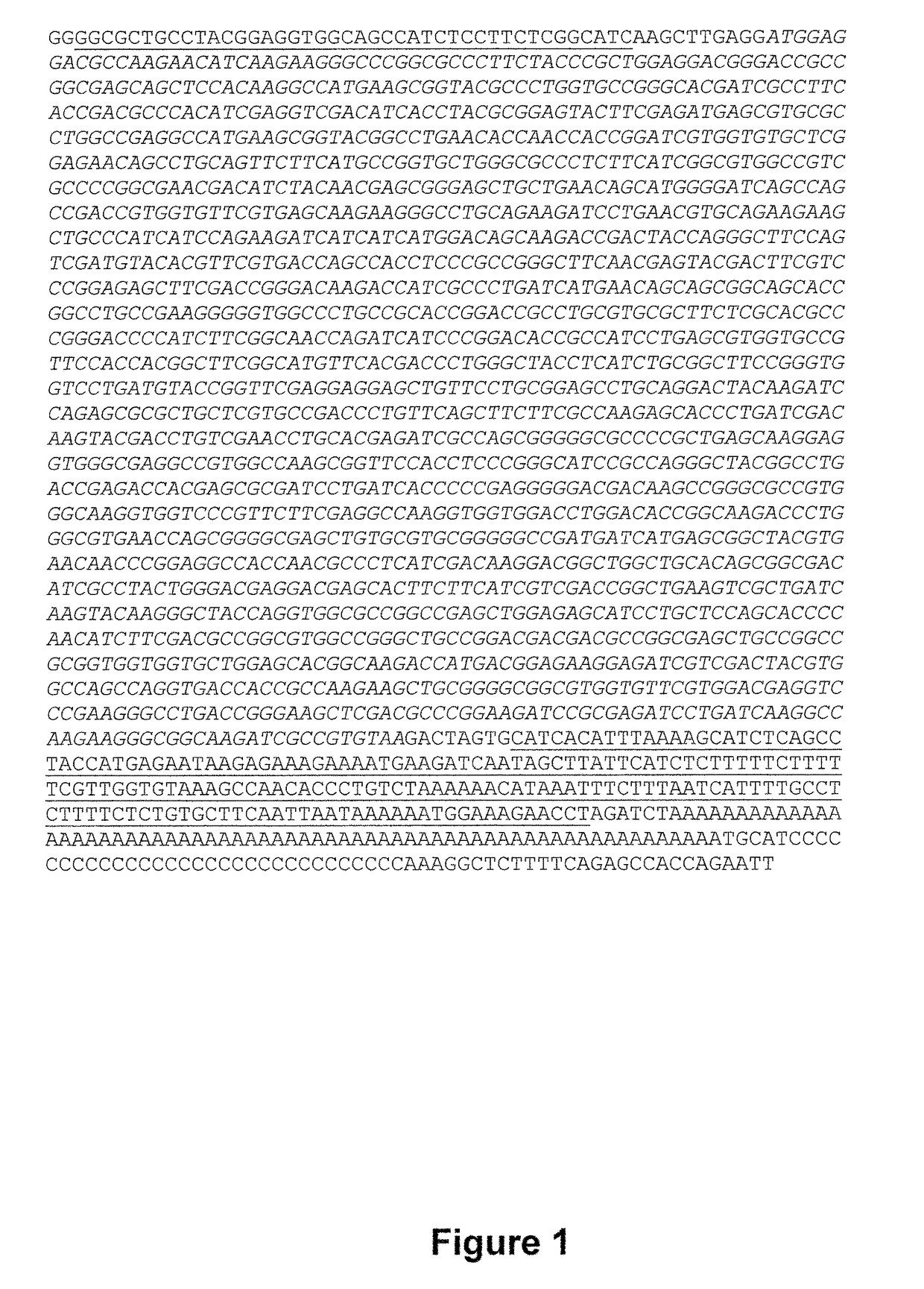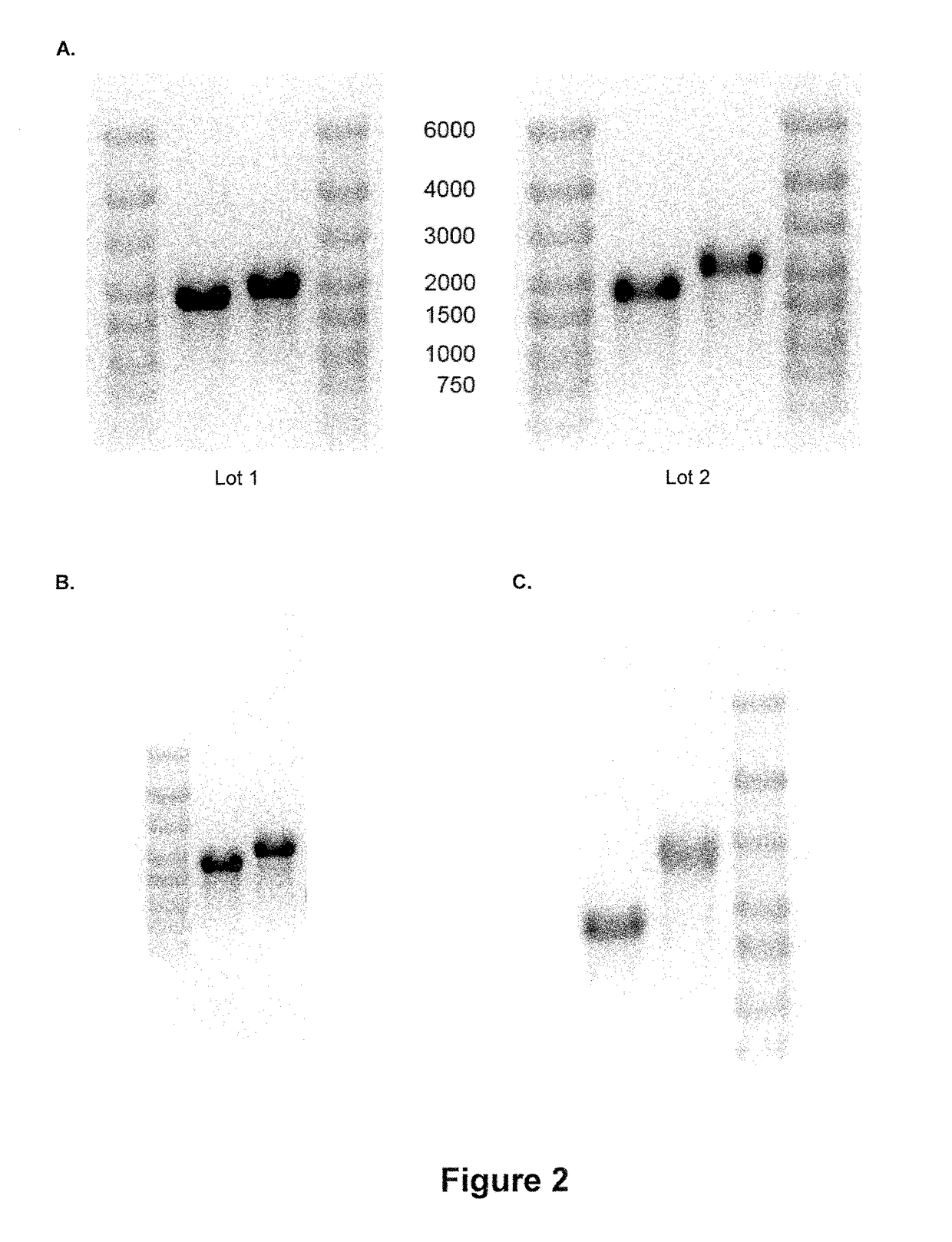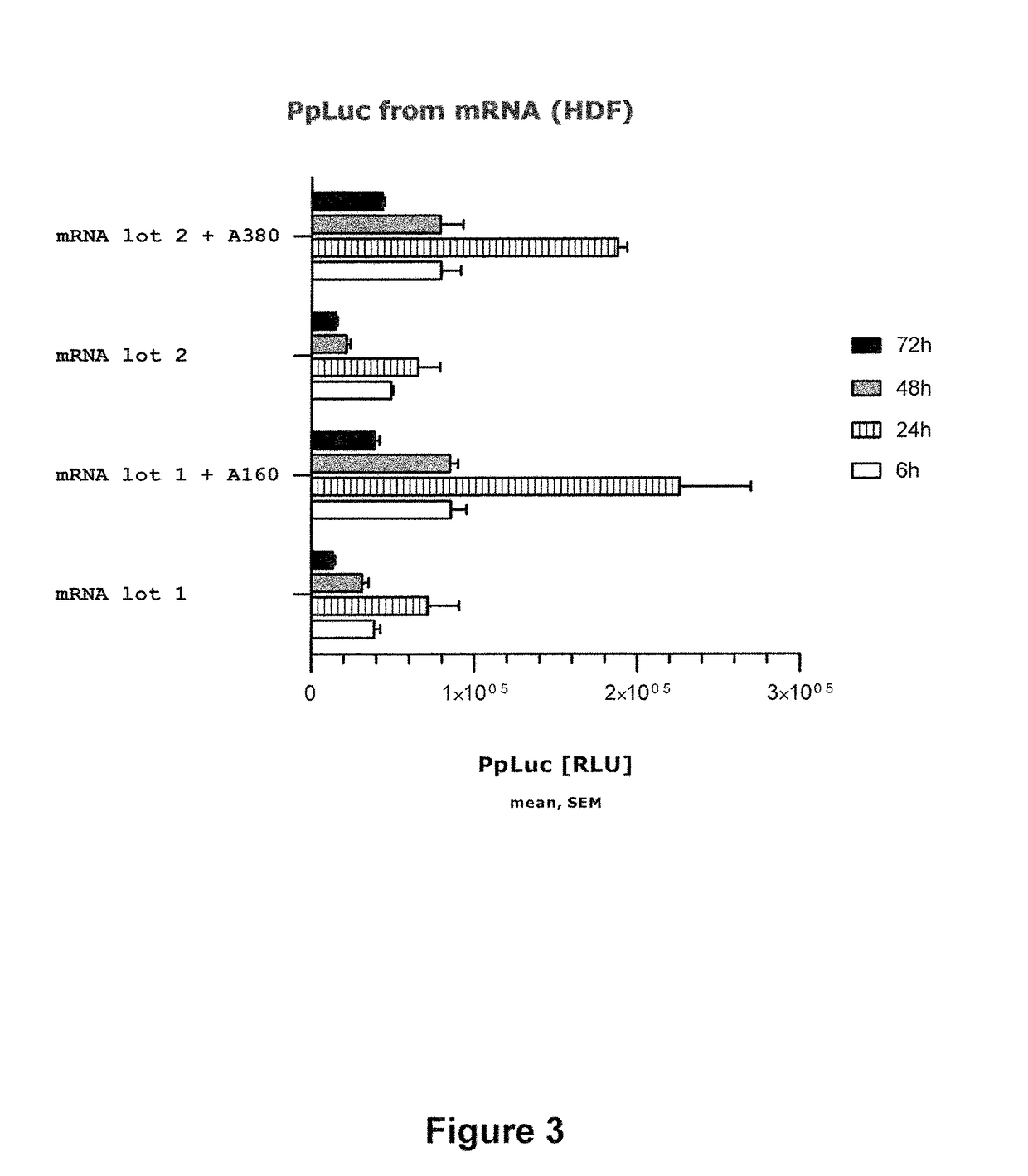Artificial nucleic acid molecules for improved protein expression
a technology of artificial nucleic acids and proteins, applied in the direction of antibody medical ingredients, genetic material ingredients, dna/rna vaccination, etc., can solve the problems of total loss of function of gene products, lack or overproduction of essential gene products, and limited functionality
- Summary
- Abstract
- Description
- Claims
- Application Information
AI Technical Summary
Benefits of technology
Problems solved by technology
Method used
Image
Examples
Embodiment Construction
[0293]The Examples shown in the following are merely illustrative and shall describe the present invention in a further way. These Examples shall not be construed to limit the present invention thereto.
1. Preparation of DNA-Templates
[0294]A vector for in vitro transcription was constructed containing a T7 promoter and a GC-enriched sequence encoding Photinus pyralis luciferase (PpLuc(GC)). The 5′ untranslated region (5′-UTR) of ribosomal protein Large 32 was inserted 5′ of PpLuc(GC). A 3′-UTR derived from human albumin (albumin7) was inserted 3′ of PpLuc(GC). Furthermore, an A64 poly(A) sequence, followed by C30 and a histone stem-loop sequence, was inserted 3′ of albumin7. The histone stem-loop sequence was followed by a restriction site used for linearization of the vector prior to in vitro transcription. mRNA obtained from this vector accordingly by in vitro transcription is designated as “rp132-PpLuc(GC)-albumin7-A64-C30-histoneSL”.
[0295]In summary, a vector was generated that c...
PUM
| Property | Measurement | Unit |
|---|---|---|
| Content | aaaaa | aaaaa |
Abstract
Description
Claims
Application Information
 Login to View More
Login to View More - R&D
- Intellectual Property
- Life Sciences
- Materials
- Tech Scout
- Unparalleled Data Quality
- Higher Quality Content
- 60% Fewer Hallucinations
Browse by: Latest US Patents, China's latest patents, Technical Efficacy Thesaurus, Application Domain, Technology Topic, Popular Technical Reports.
© 2025 PatSnap. All rights reserved.Legal|Privacy policy|Modern Slavery Act Transparency Statement|Sitemap|About US| Contact US: help@patsnap.com



